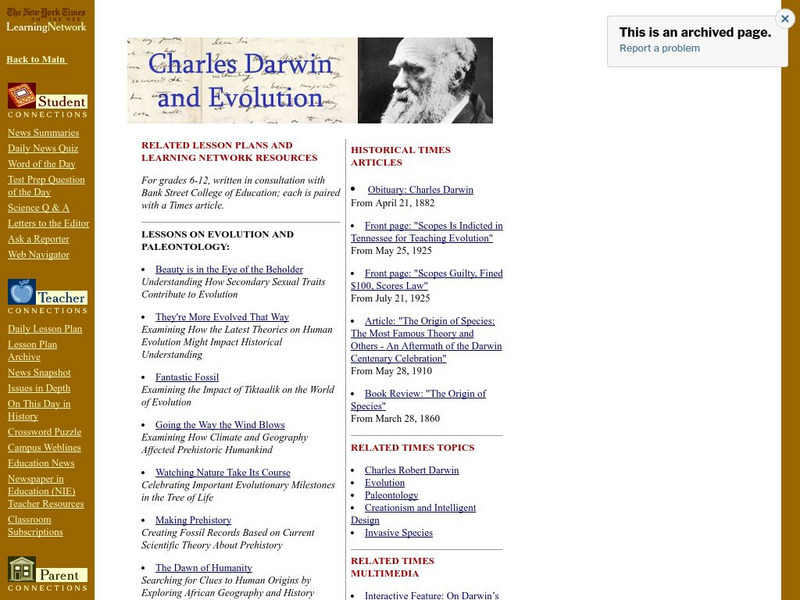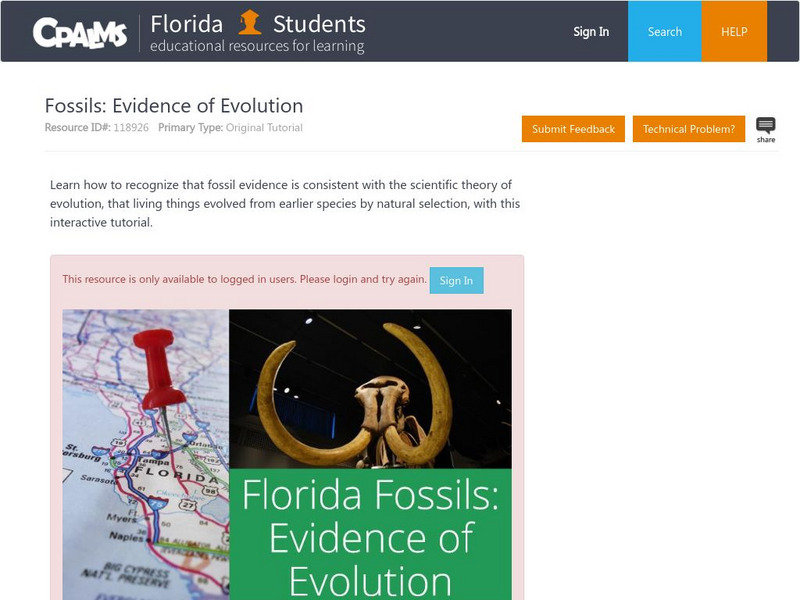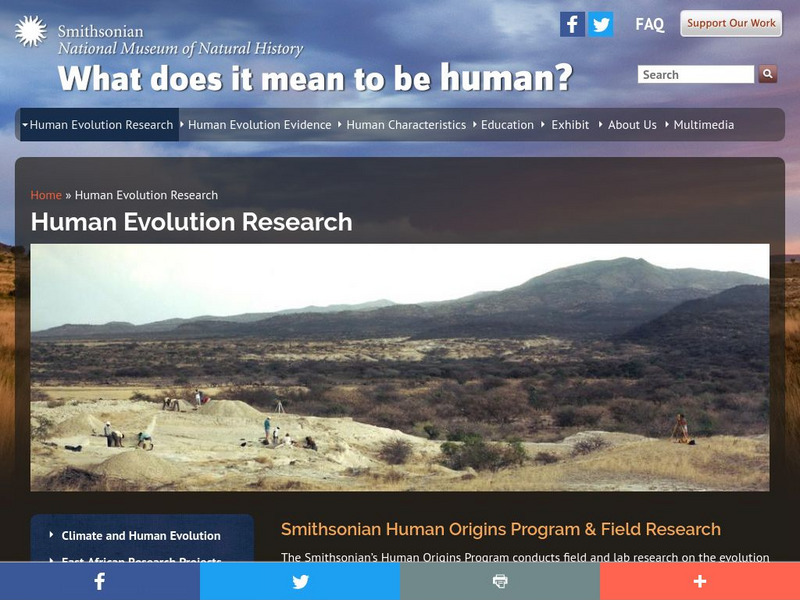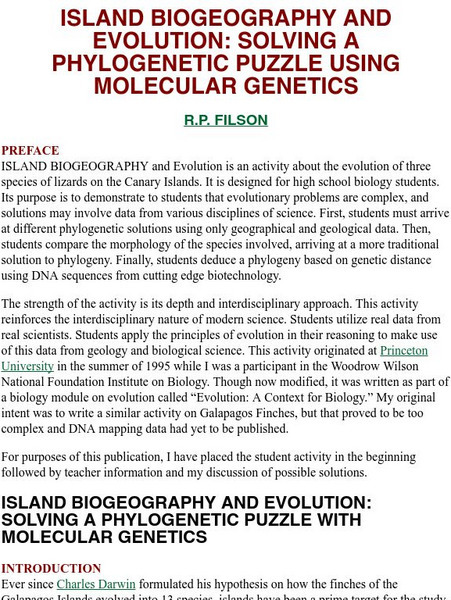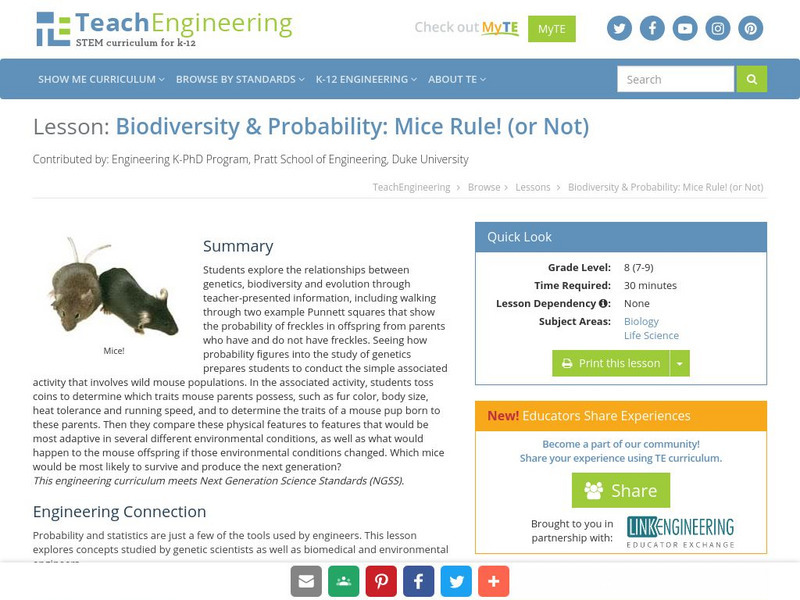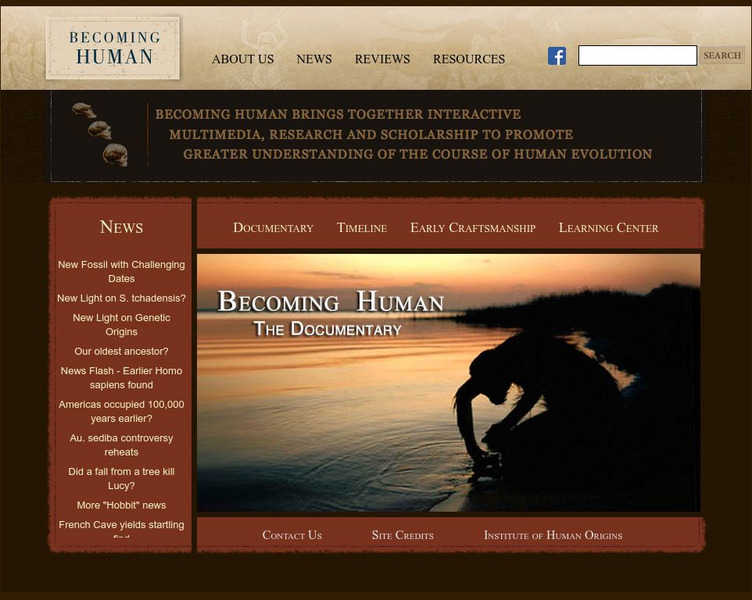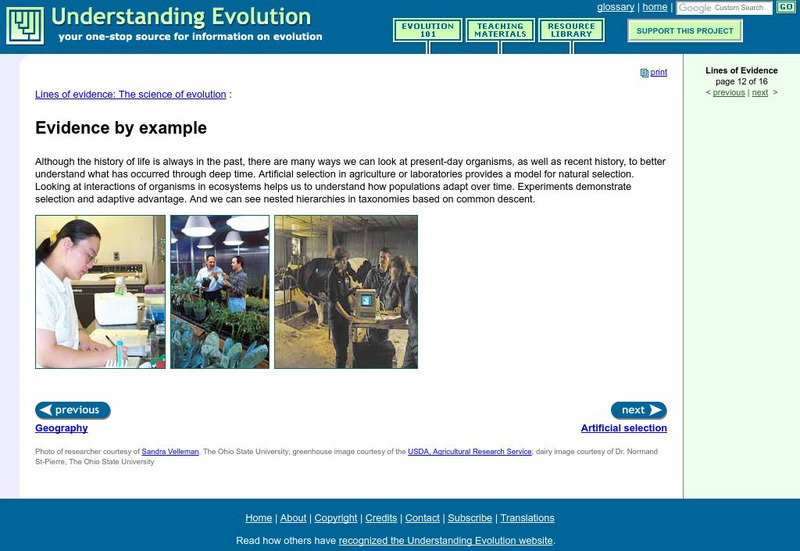CK-12 Foundation
Ck 12: Life Science: 7.14 Plant Adaptations
Learn about some adaptations plants have in order to survive.
New York Times
New York Times: Charles Darwin and Evolution
An outstanding collection of materials for learning about Charles Darwin and Evolution. There are many different lessons on the topics of evolution, paleontology, biodiversity, and adaptation. Each lesson is paired with an actual New...
Bryn Mawr College
Bryn Mawr College: Evolution, Ecology, Diversity: Evolution by Natural Selection
After looking at examples of natural selection and doing a simulation activity, students investigate further by playing a simulation game and analyzing the data they collect. They then examine evidence of natural selection for the...
The College of Physicians
The History of Vaccines: Viruses and Evolution [Pdf]
The purpose of this lesson is to prepare students for exploring the biological basis of vaccines. Students will explore the nature of viruses, specifically their structure and ability to adapt through evolution.
CPALMS
Florida State University Cpalms: Florida Students: Florida Fossils: Evidence of Evolution
See how fossils have shown evidence of evolution throughout the history of the Earth.
Smithsonian Institution
National Museum of Natural History: What Does It Mean to Be Human: Human Evolution Research
Research continues to discover evidence left behind by prehistoric man. Discover the climate effects on human evolution and explore how the adaptable survived. The Asian and East African Research Projects in Kenya are described. You,...
Encyclopedia of Earth
Encyclopedia of Earth: Adaptations of Desert Plants
The ways in which plants have adapted through evolution in order to survive in a desert environment are described in this article. Getting water and retaining water are key to their survival, including protecting themselves from animals...
University of California
Ucmp: Island Biogeography and Evolution
This is a lesson designed by a biology teacher. In it, students use maps and evidence of island age, molecular genetics, morphology, and distance apart to determine how the islands came to be occupied by different species of lizards. It...
CK-12 Foundation
Ck 12: Biology: Theory of Evolution by Natural Selection
[Free Registration/Login may be required to access all resource tools.] Covers Darwin's theory of evolution by natural selection.
Concord Consortium
Concord Consortium: Stem Resources: Predators and Prey
Did you ever want to be a hawk? In this virtual ecosystem, students will take on the role of a hawk and try to catch rabbits on a snowy field. Students will see which rabbits have adaptations that allow them to blend into the environment...
Concord Consortium
Concord Consortium: Evolution: Variations and Adaptations
Students discover that variation in plants allows some varieties to survive in near-drought conditions. Next, students learn that different types of rabbits prefer to eat different varieties of plants. Students make the connection...
University of California
Understanding Evolution: Microevolution
Get an overview of the process of microevolution.
Concord Consortium
Concord Consortium: Stem Resources: Variations and Adaptations
Experiment with variations in grass to see which size grows best with different amounts of water. Understand that grass that can live in different levels and change to its environment has a better chance of surviving. Also, experiment...
ClassFlow
Class Flow: Adaptations in the Animal World
[Free Registration/Login Required] Learn about how animals adapt through evolution and how some plants and animals are becoming extinct.
TeachEngineering
Teach Engineering: Mice Rule! (Or Not)
Students explore the relationships between genetics, biodiversity, and evolution through a simple activity involving hypothetical wild mouse populations. First, students toss coins to determine what traits a set of mouse parents...
PBS
Pbs Learning Media: Shape of Trees: The Frustration Principle
This series of images shows the work of biologist Karl Niklas on the adaptations and evolution of plants. From The Evolutionary Biology of Plants.
Estrella Mountain Community College
Maricopa Community College: Nonvascular Plants and Nonseed Vascular Plants
Very detailed outline describing several aspects of plant diversity, including vascular vs. nonvascular, evolutionary adaptations, homosporous and heterosporous life cycles, and specific information on some ancient species (Lycophytes,...
Other
Institute of Human Origins: Becoming Human
Multimedia-rich guide for anyone making their way through a study of human origin. Find information and analysis about the fossil record, comparative anatomy, theories, and the cultural adaptations of humans and their ancestors. With an...
PBS
Pbs Learning Media: Tetrapod Limbs
This illustration from Evolution by Monroe W. Strickberger shows the remarkable similarities between the bones in the forelimbs of various tetrapods, all of whose limbs serve very different functions.
PBS
Pbs Learning Media: Mammals Get Their Chance
In this video segment adapted from NOVA, animations of an asteroid hitting Earth are used to illustrate this widely accepted theory of dinosaur extinction and the resulting conditions that favored mammals.
CK-12 Foundation
Ck 12: Episd: Biogeography
[Free Registration/Login may be required to access all resource tools.] Why connect biology and geography? This module will provide resources for students to understand continental drift theory, human population and its distribution, and...
The Wonder of Science
The Wonder of Science: Ms Ls4 6: Adaptation of Populations Over Time
Middle schoolers use mathematical representations to support explanations of how natural selection may lead to increases and decreases of specific traits in populations over time.
University of California
University of California Museum of Paleontology: Evidence by Example
The Understanding Evolution website for teachers provides common examples of evolution, especially by artificial selection.
University of California
University of California Museum of Paleontology: Homologies
These pages are from the Understanding Evolution website for teachers. They focus on homologous structures that organisms with common ancestors share.



